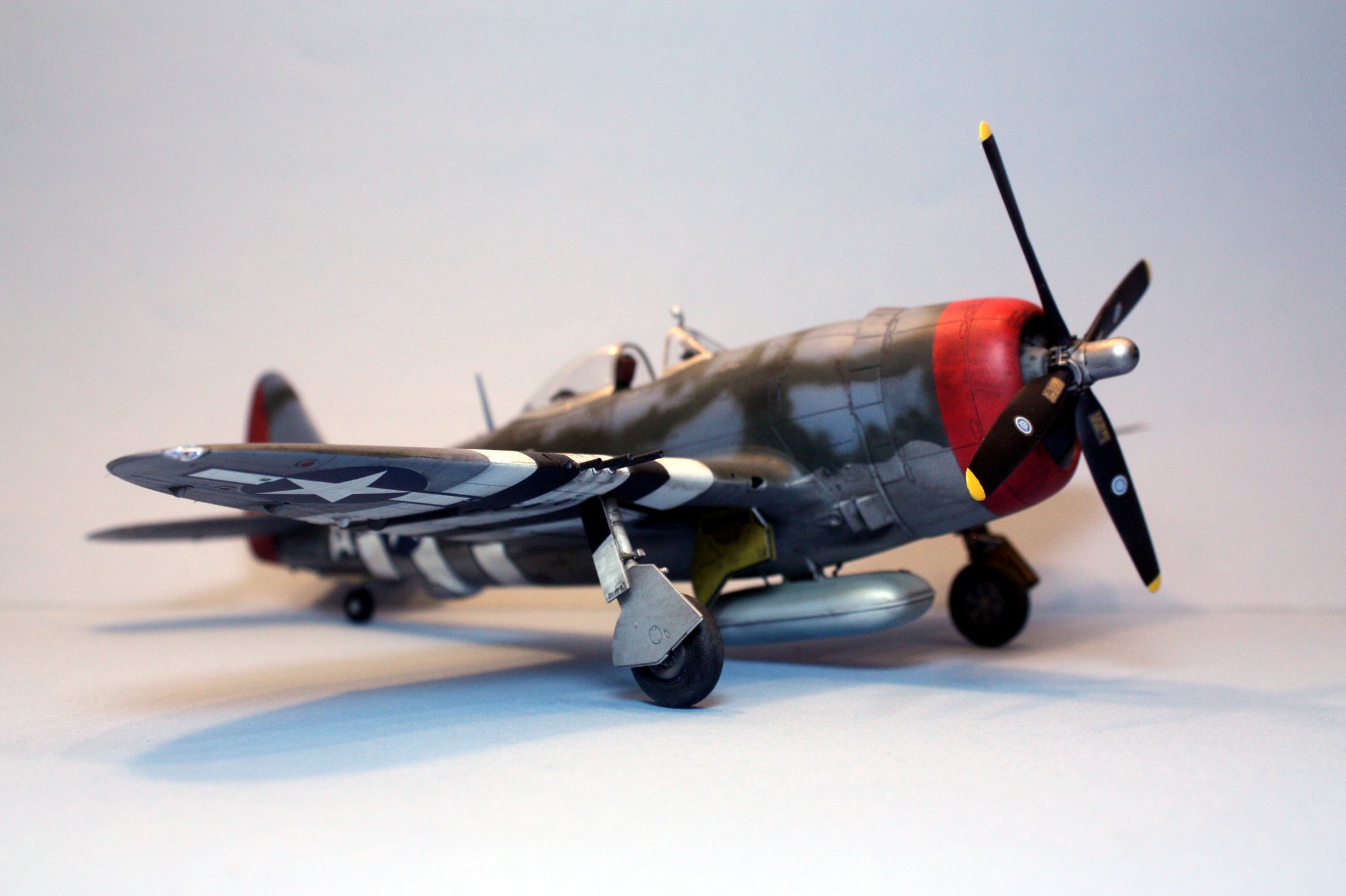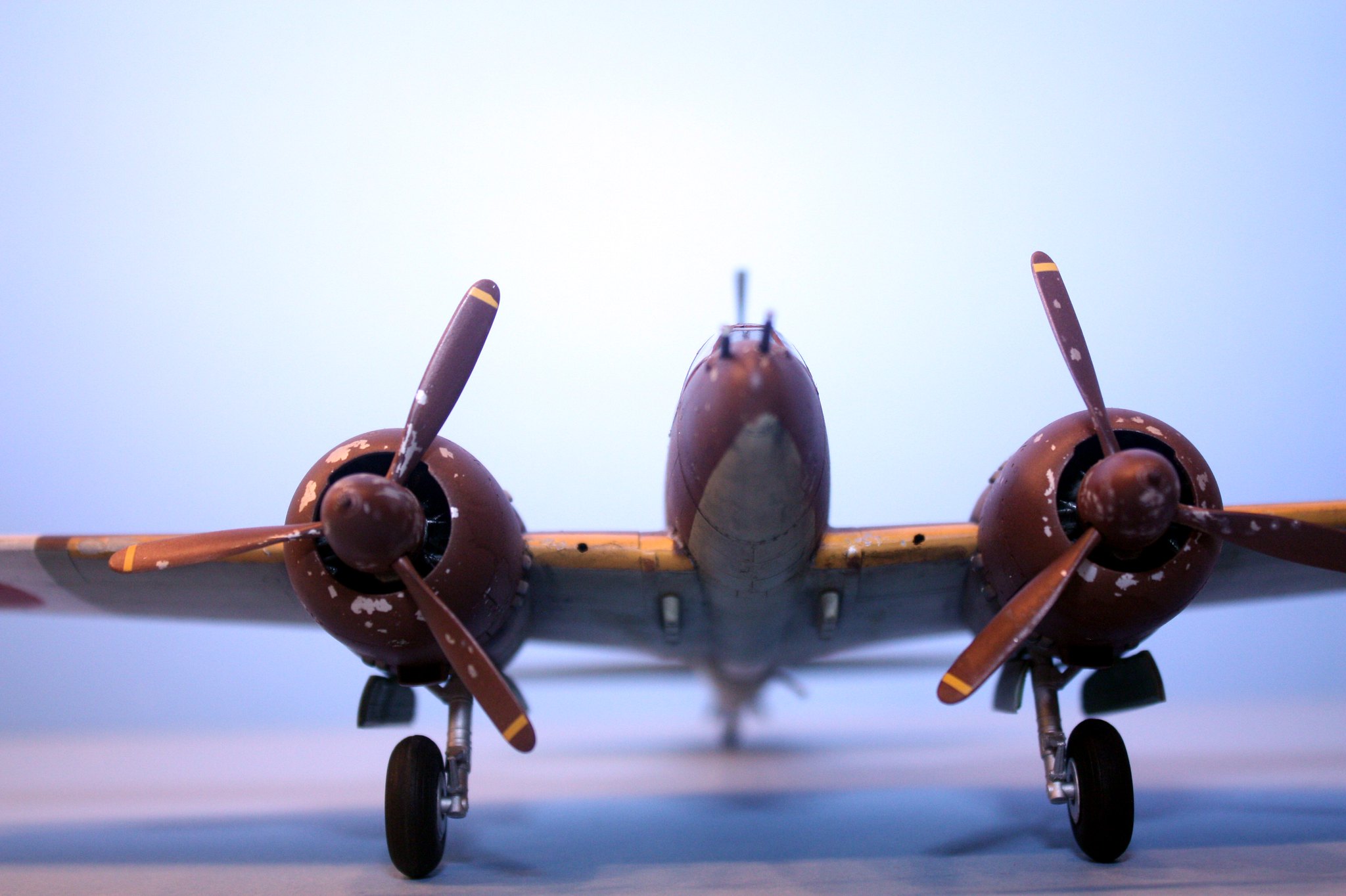I fancy myself an amateur (very amateur) photographer with some decent equipment. I have a Canon Rebel XSi with the standard 18-55mm lens as well as a 70-300mm telephoto and a 85mm macro lens. I also use a Canon Speedlite 430EX II external flash.
I typically use a tripod but often, because of space limitations, don't feel I can get the camera close enough to my subjects so I will take hand-held photos with the lens just an inch or two away from the subject. I usually use the 18-55m lens to take pictures of the aircraft that I build.
Current settings on my camera are f-stop 1/80 and ISO 800, I don't think I alter these settings very frequently.
So here are a few recent photos to demonstrate the issue that I am noticing in my photographs.

On this Jug, the tail end is out of focus. Is this because I have placed the lens to close that it is focusing on the nearest portion of the aircraft? Is there anything I can do to yield a bit more focus to the entire subject?

On this George, more of the same focus issue as with the Thunderbolt, but also it seems a bit dark under the wing.

On this Dinah, I was about an inch away and the camera was actually lower than the aircraft, yet there does not seem to be much light getting under there. I have been looking at an LED ring flash and light (saw the orthodontist use one of these on extreme close-ups of my daughter's teeth), so I am curious if anyone has any experience using one of these?